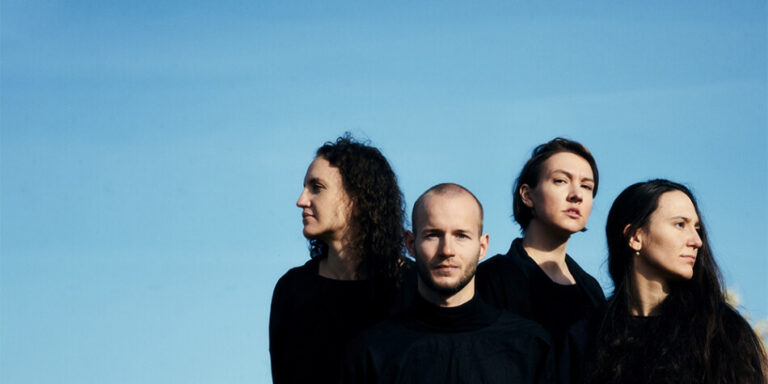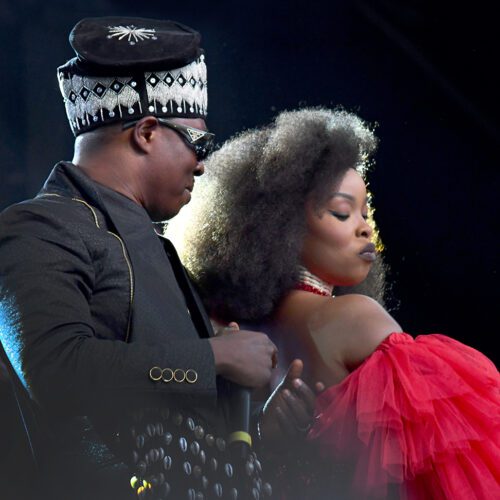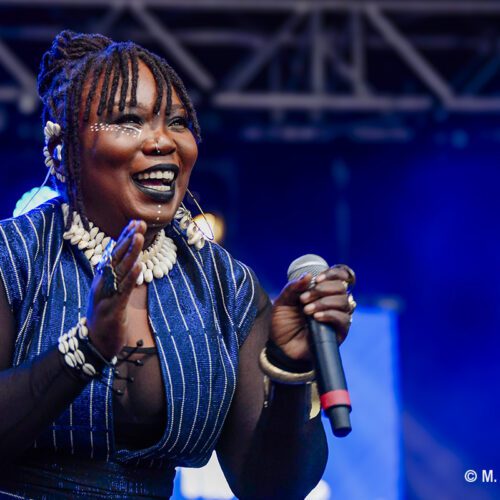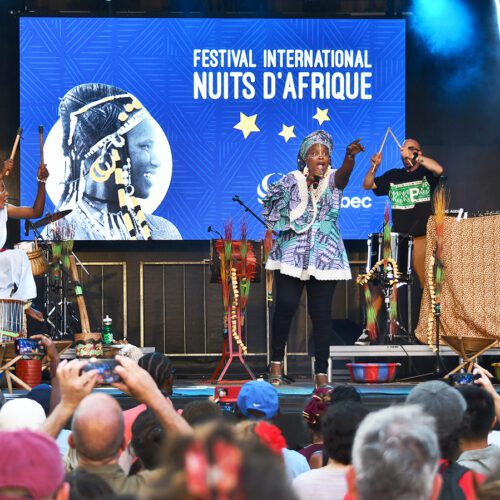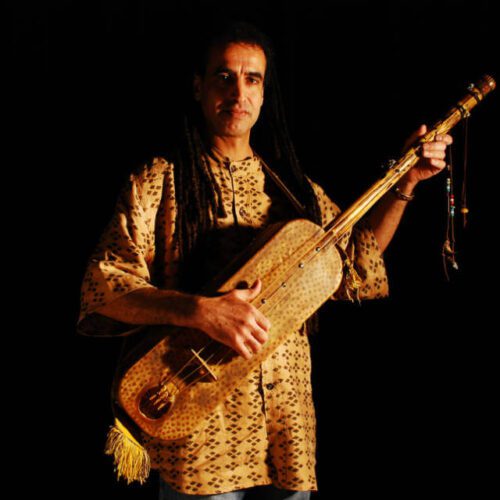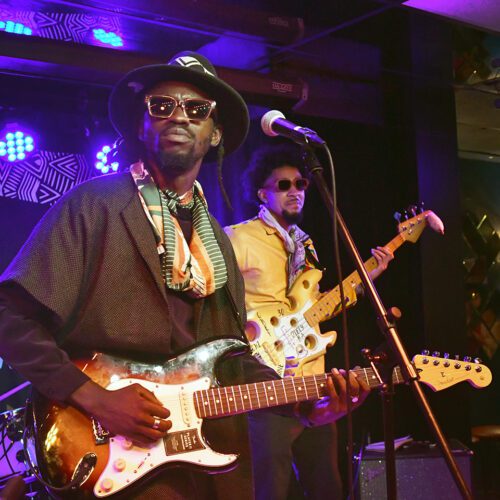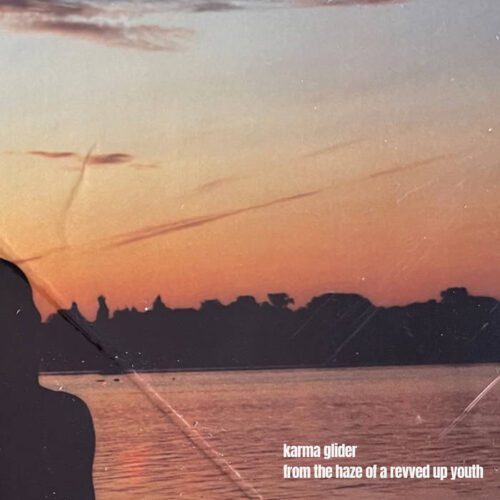It was in the heart of the Elizabeth Wirth Building of McGill University’s Schulich School of Music, in its large underground multimedia room, that the Between Feathers ensemble (made up of Laure-Catherine Beyers on vocals, Audrey G. Perreault on flutes, Hannes Schöggl on percussion, and Maria Mogas Gensana on accordion) performed a selection of music by various composers from around the world in a programme entitled Sturm und Klang, or “storm and sound” in German.
The concert opened with a single, sharp brushstroke from a snare drum. The composition, “(des)en)canto” by Pedro Berardinelli, proceeds by becoming a kind of soundtrack to an evening in an otherworldly restaurant; the low notes of the accordion played like chairs scraping on the floor, two percussive bowls were struck and rubbed together, and over this, the extended technique of the other musicians like the “slap tongue” – a percussive effect – of the bass flute, and the voice singing through the snare drum, among other interesting effects.
Continuing with Tanja Brueggemann’s “La Somme des Chiffres 1+2”, the ensemble, equipped with flashing headlamps, was plunged into the darkness and gloom of the composition. There were sounds almost like rain playing in 3D through the seventy speakers around the hall, as the musicians played an ambience that evoked sea waves beneath a ship in the night, with vocal notes piercing the air like siren songs through the mist. The huge projector screen hanging over it like a big sail reinforced the image, and even when they sat at a table over a single illuminated glass, it was like a tense dinner in the ship’s cabin.
The other compositions took advantage of similar techniques, with the addition of projections for Nour Symon’s “Mâ‘lesh I – leurs étreintes bouleverserait la mer”, which followed two brushstrokes of black and multicolored ink on a scrolling canvas that corresponded to the flute and accordion, respectively; and Lisa R. Coons’ “Essay I: Mater”, in which a voice spoke over a photo of several pieces of paper with personal reflections, musical instructions, and drawings, on a table decorated with bones and flowers. This second piece succeeded in capturing the effort to define one’s craft as an artist and the incessant thoughts of doubt that accompany it, but the projections, especially the second with its montage of jumbled zooms and color changes, remained dynamic but lost their novelty before the end.
The pieces “La forma delle conchiglie” by Lorenzo Troiani and “about, away – Création” by James O’Callaghan, also had their strong points, with the addition of almost operatic moments, made all the more captivating by the grandeur of the hall. Both, with their use of lighting effects and alternative techniques, were as dramatic and cinematic as the compositions by Bernardinelli and Brueggemann.
In all, the musicians demonstrated superior control of these difficult materials and a high level of performance. Sturm und Klang indeed.
